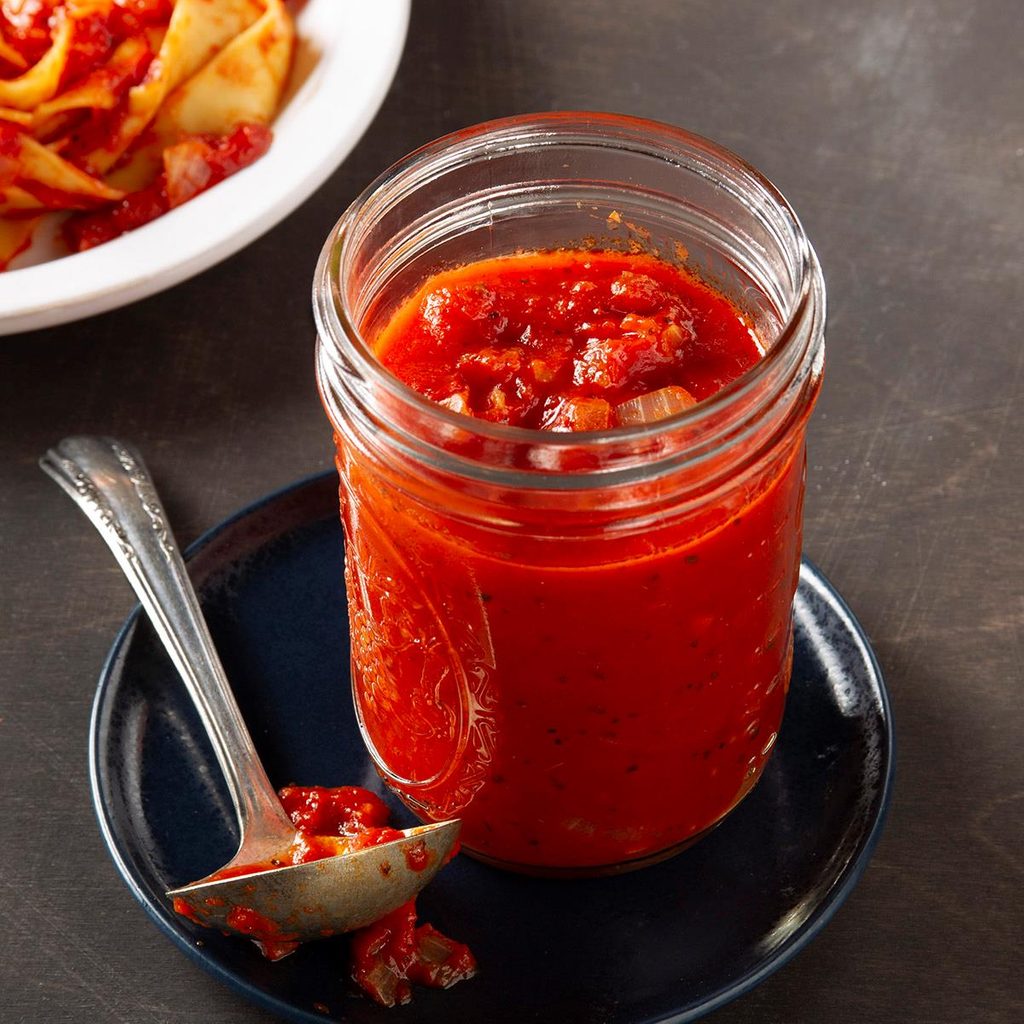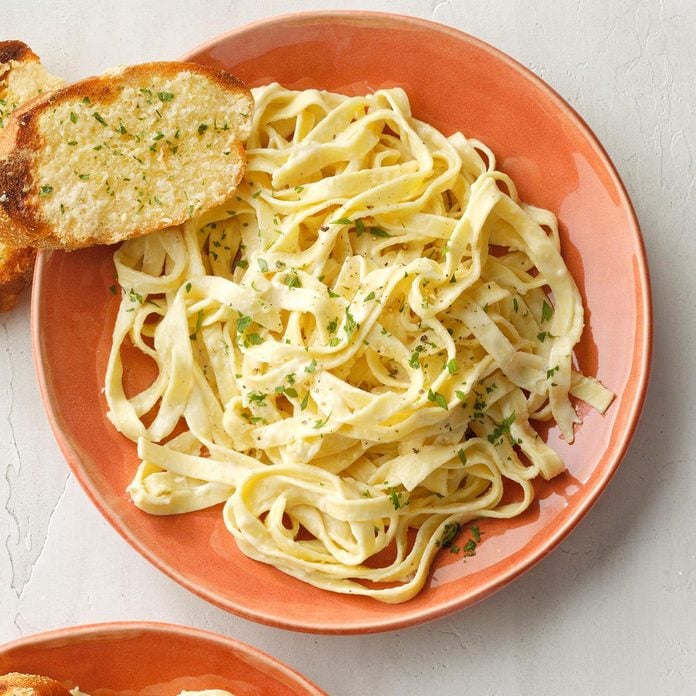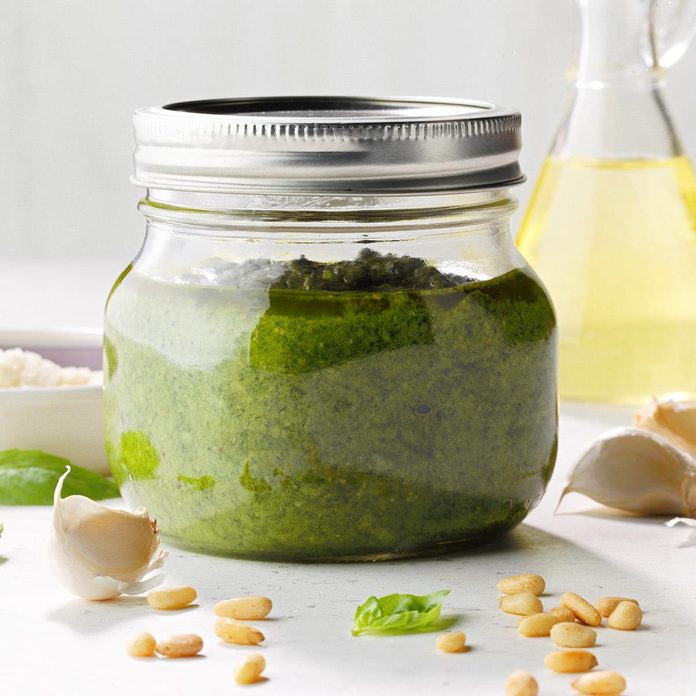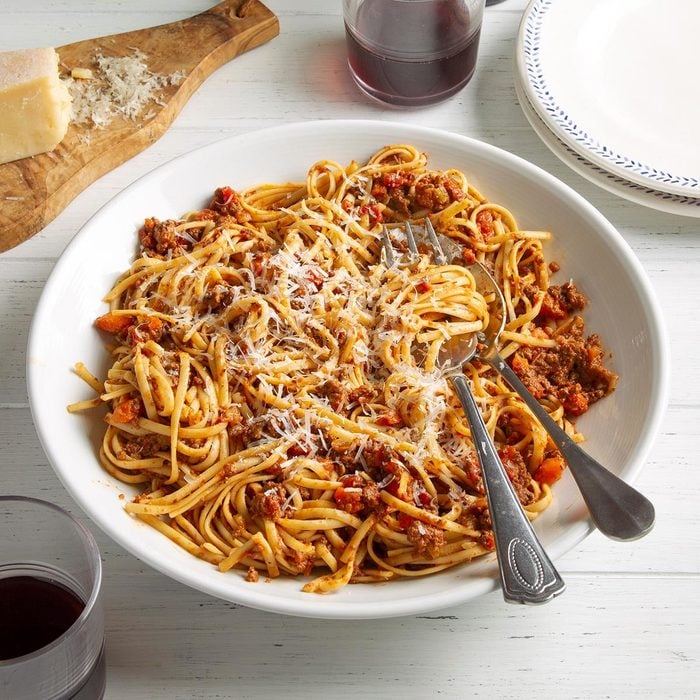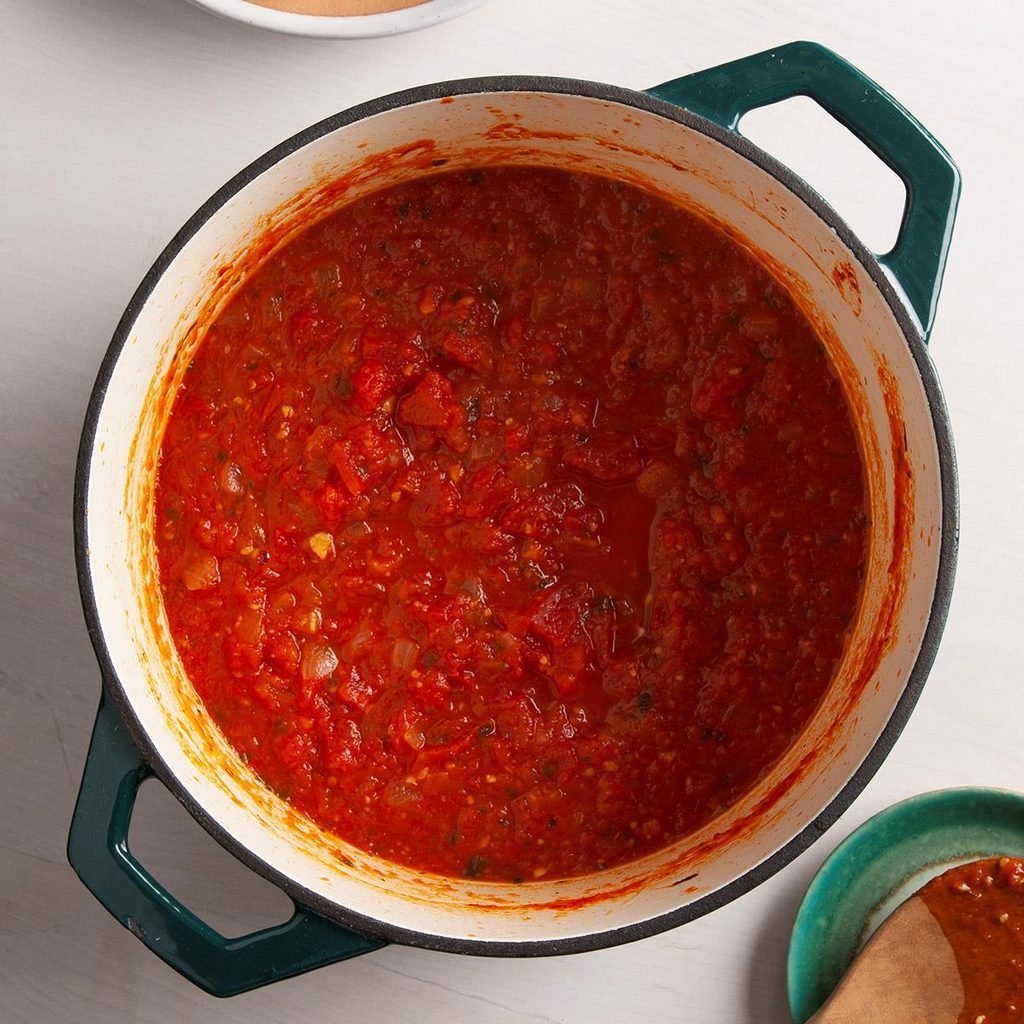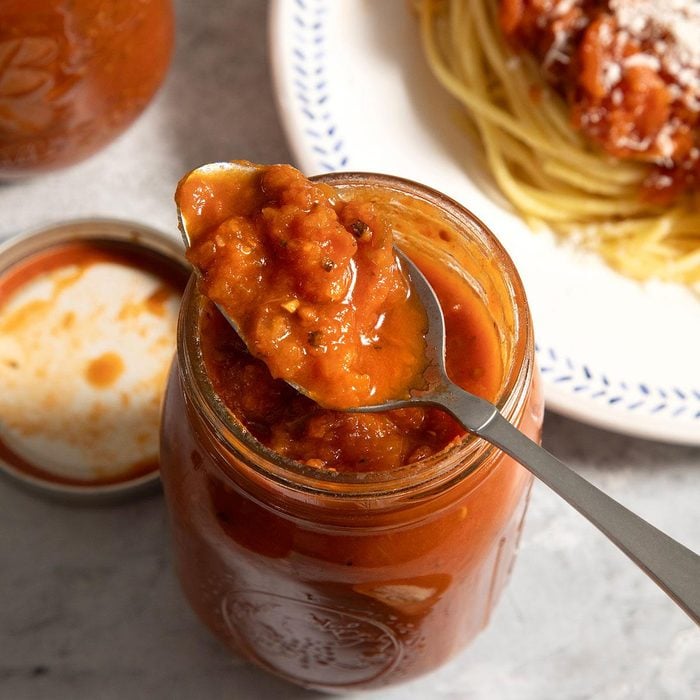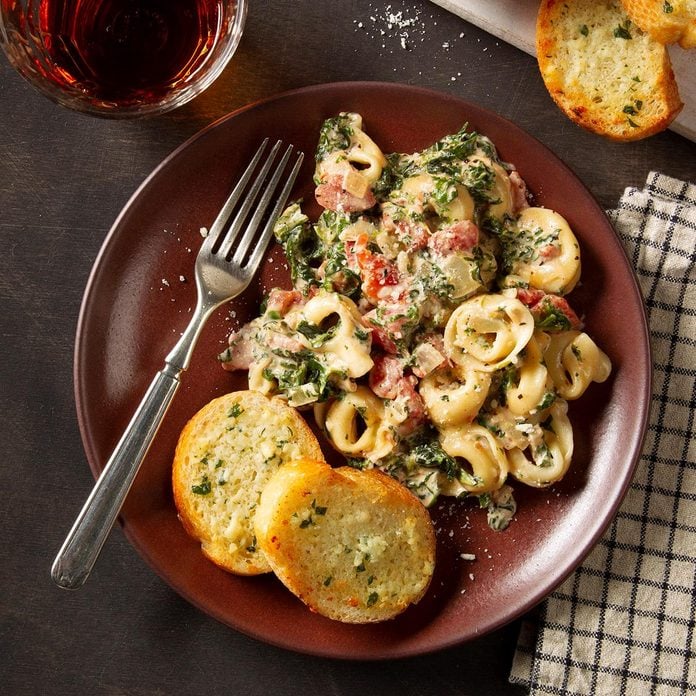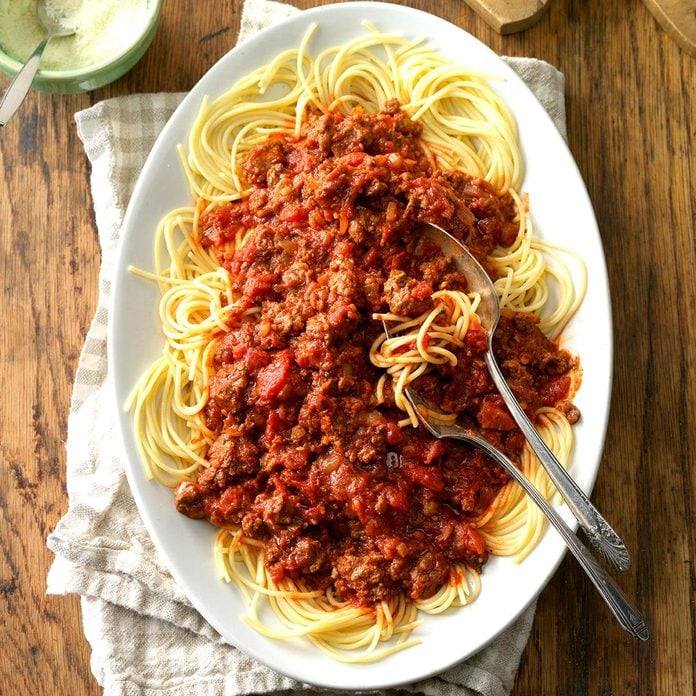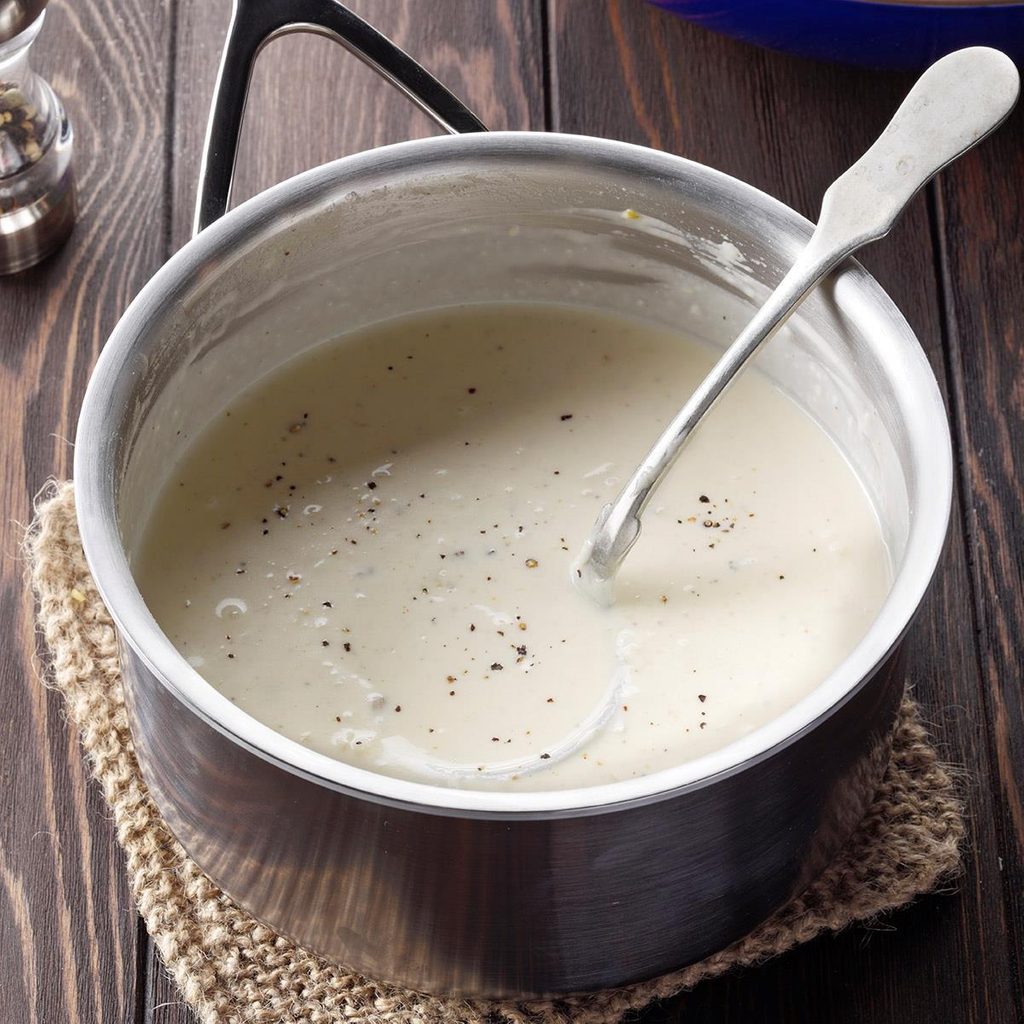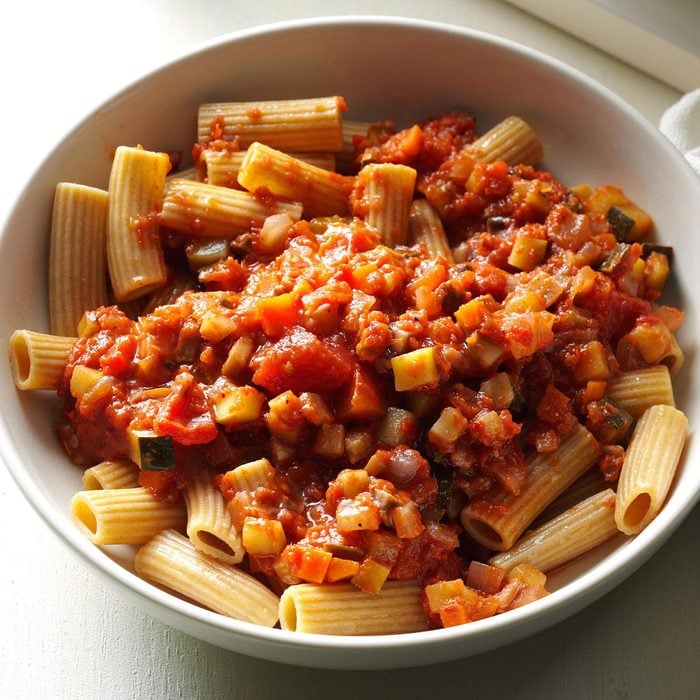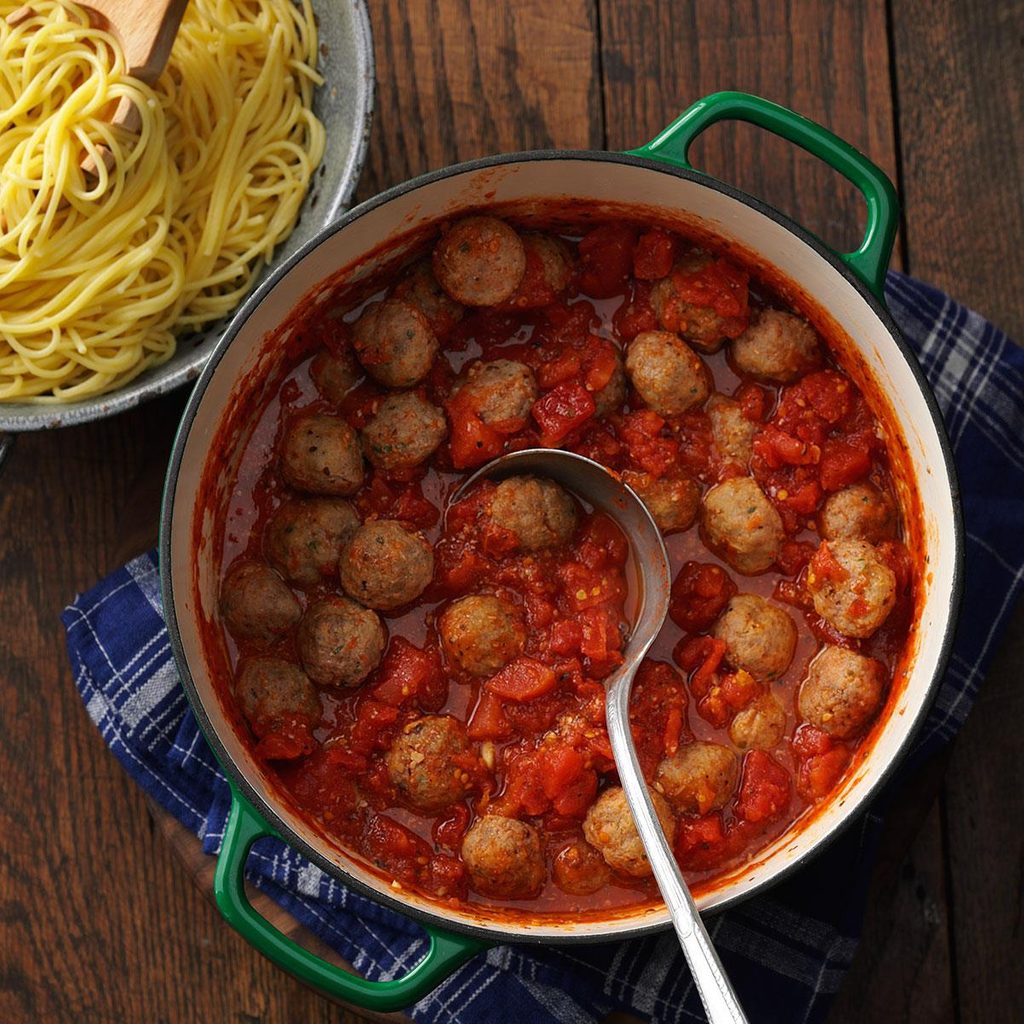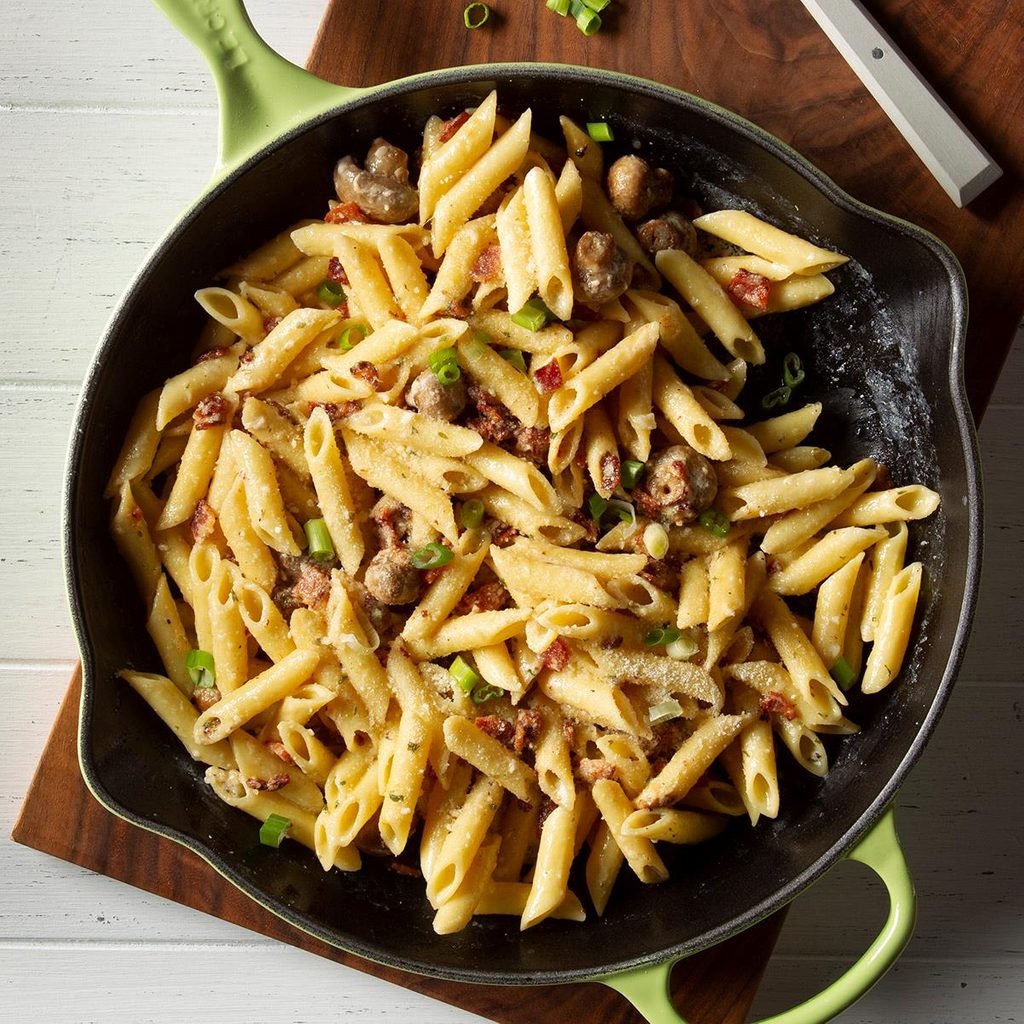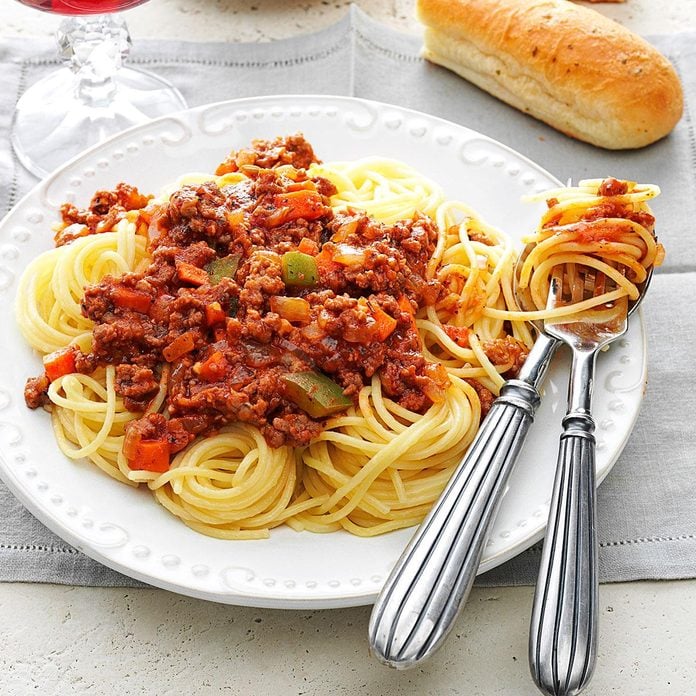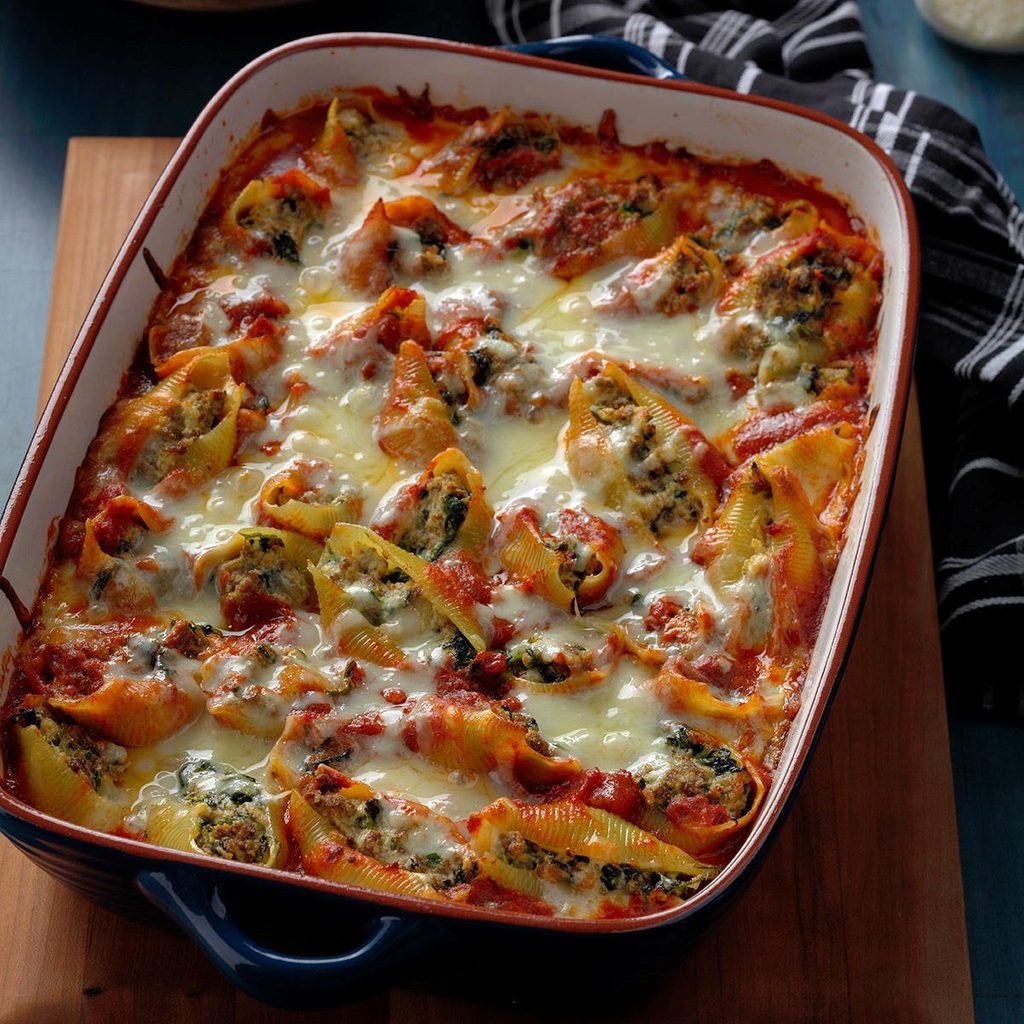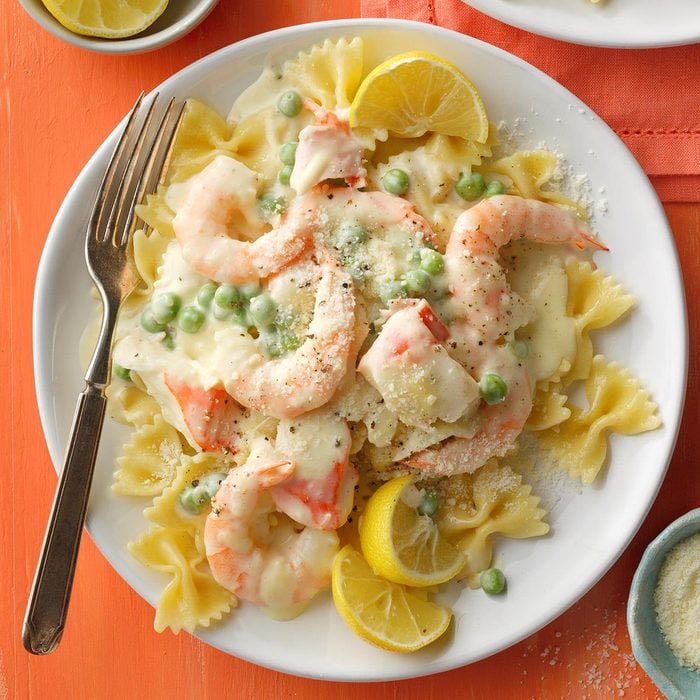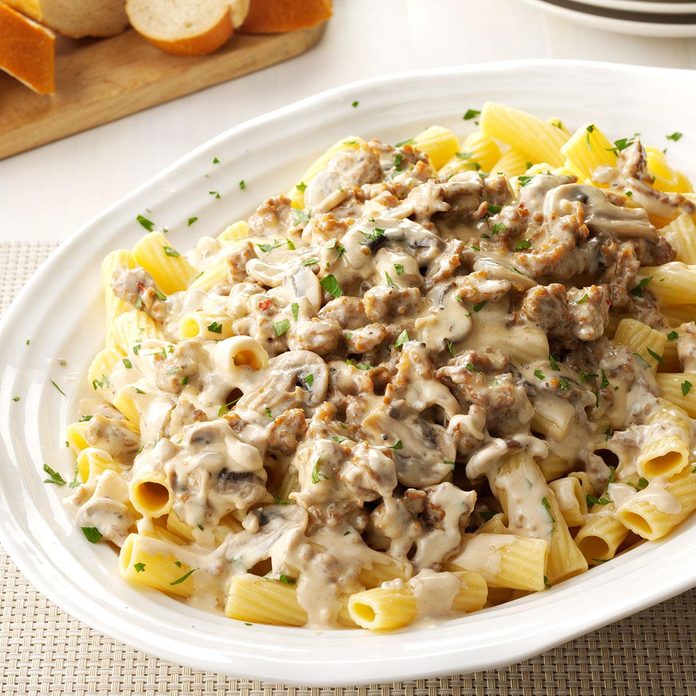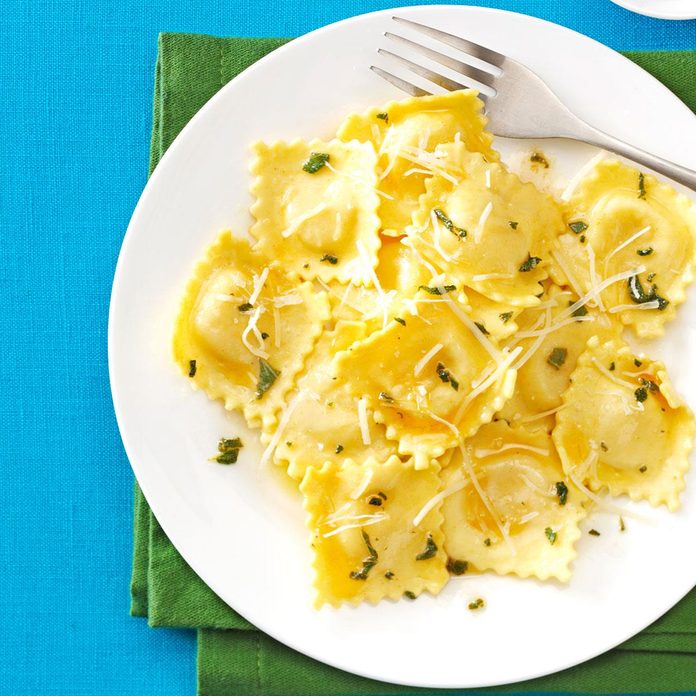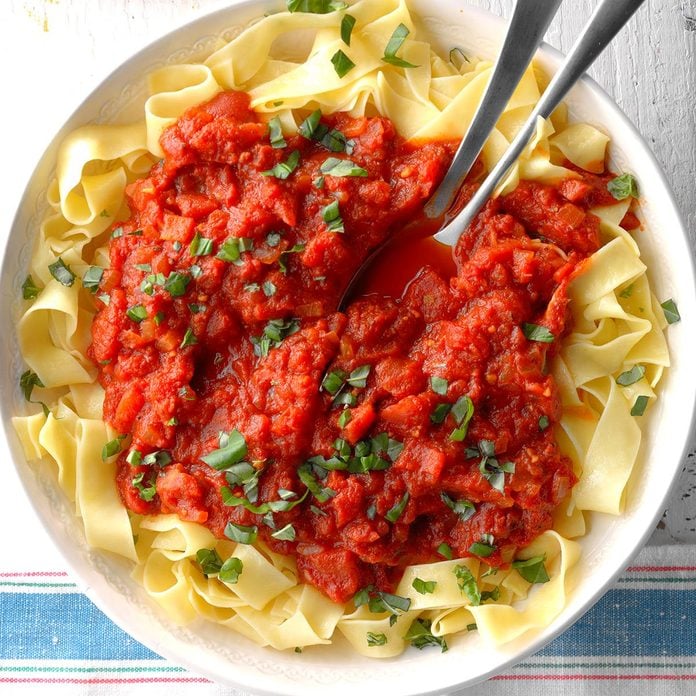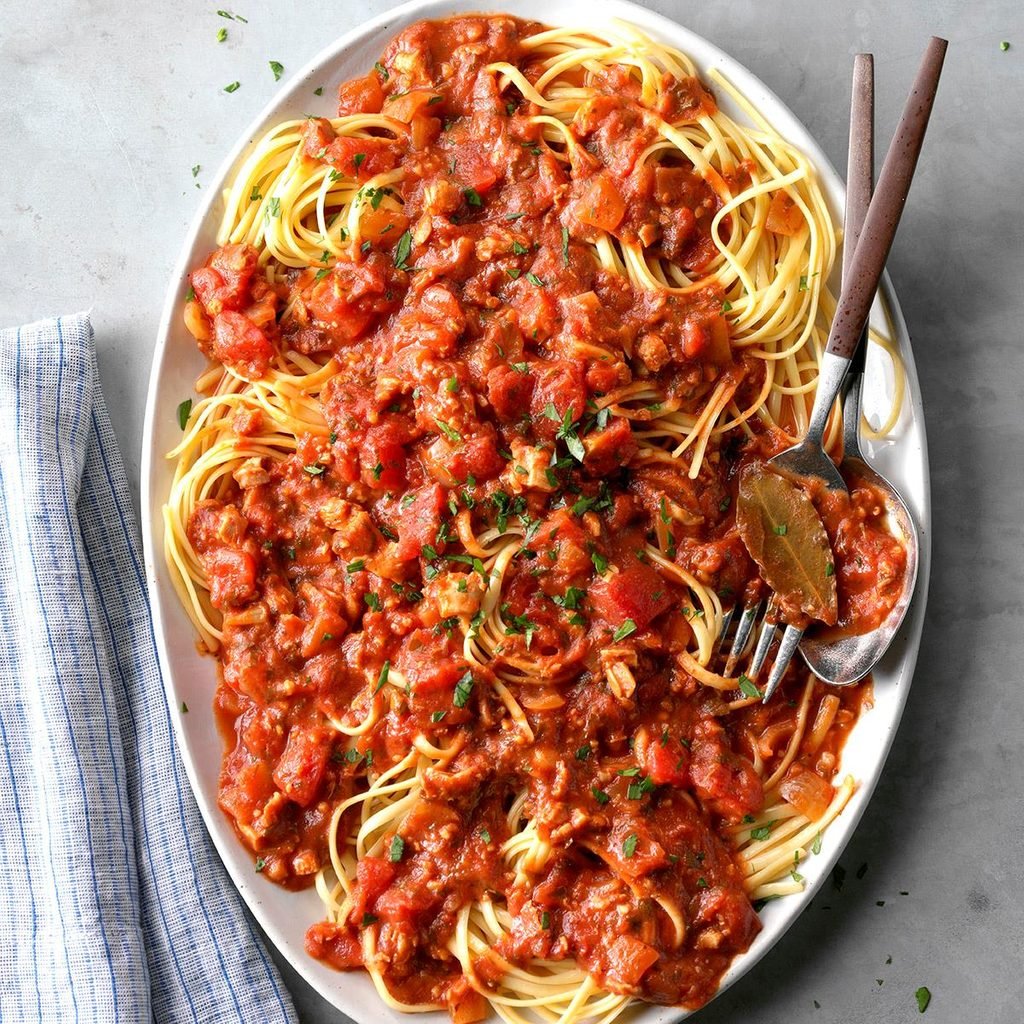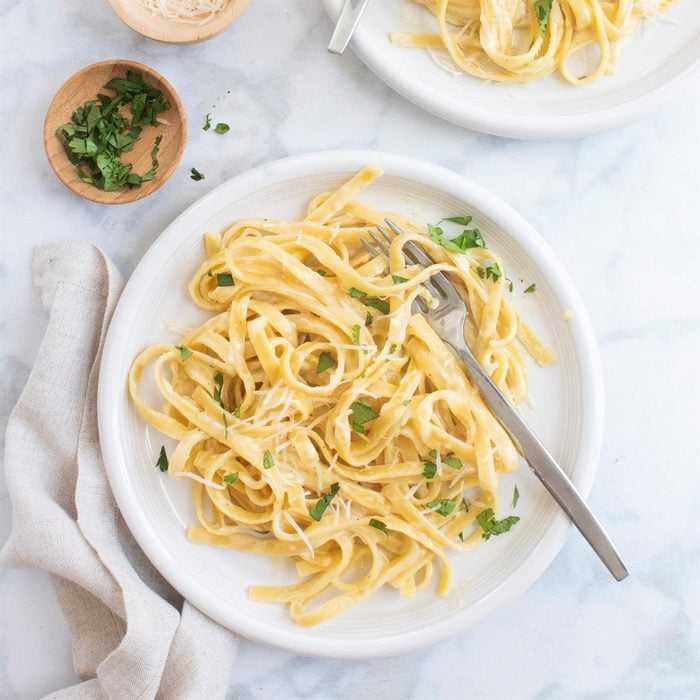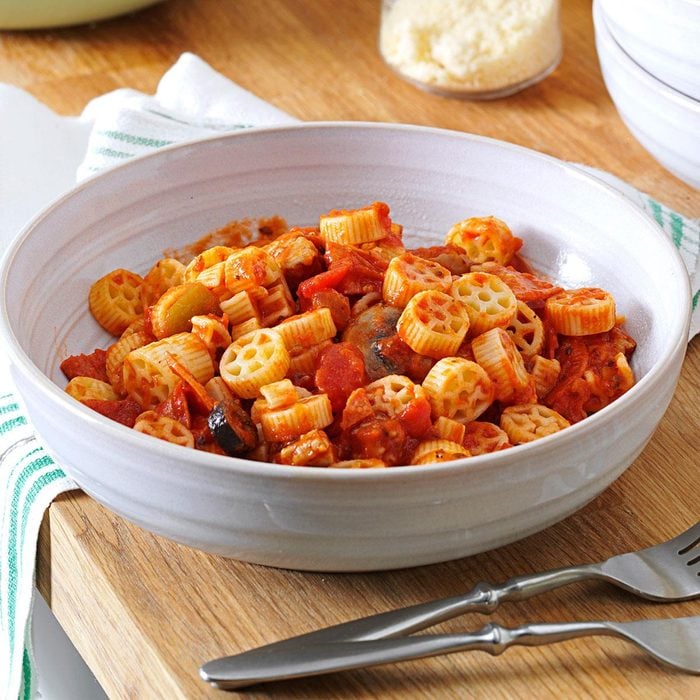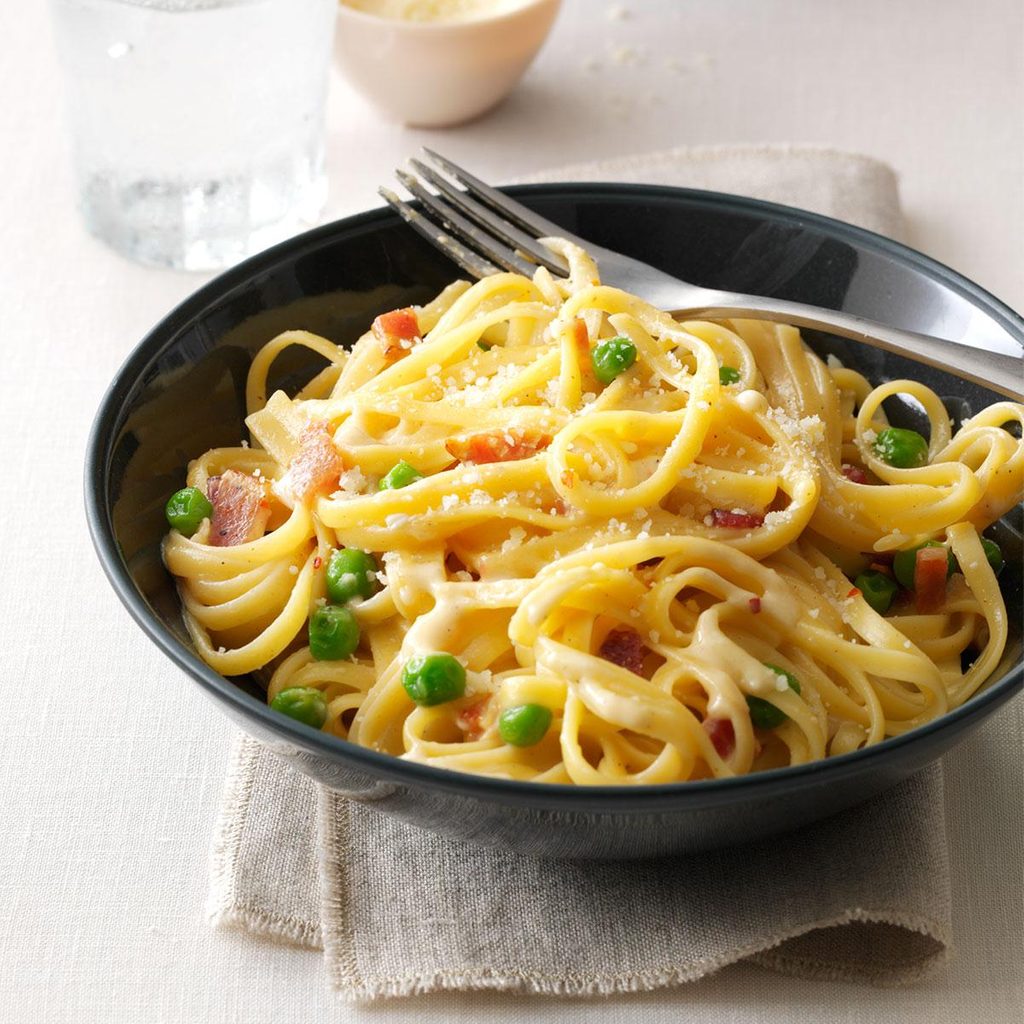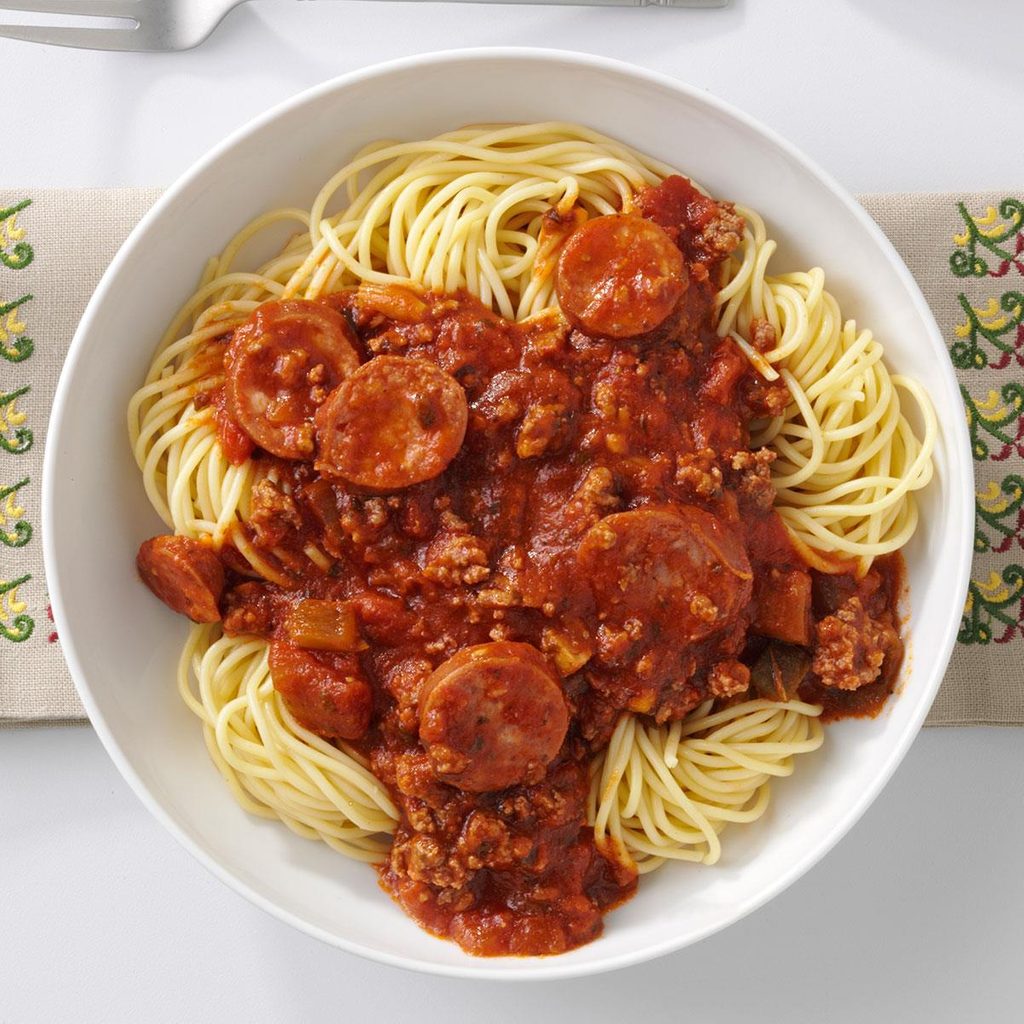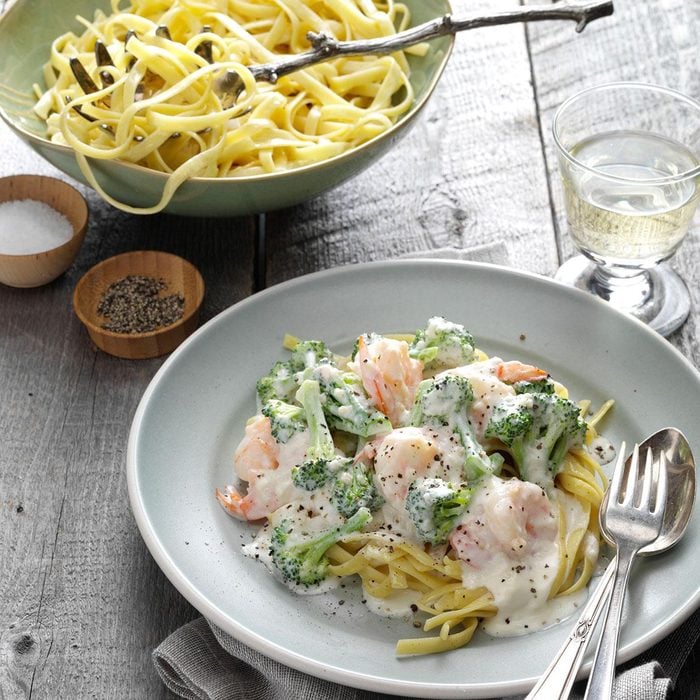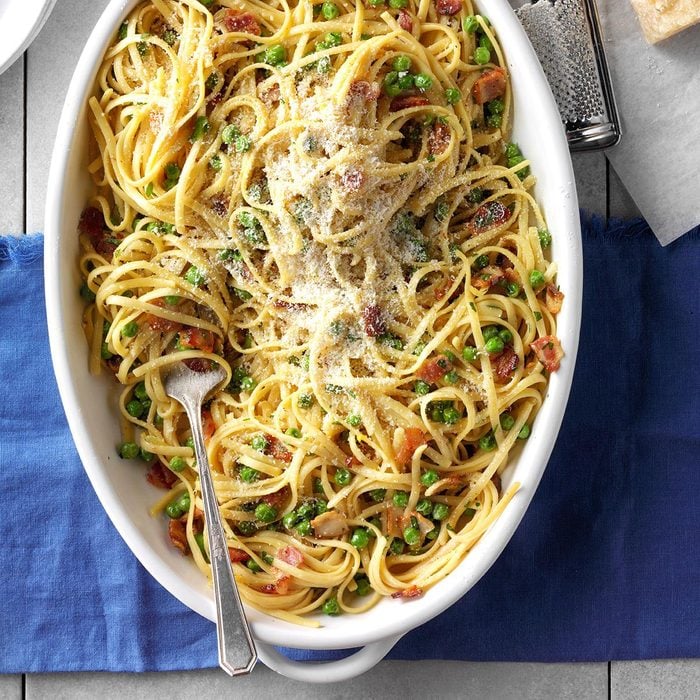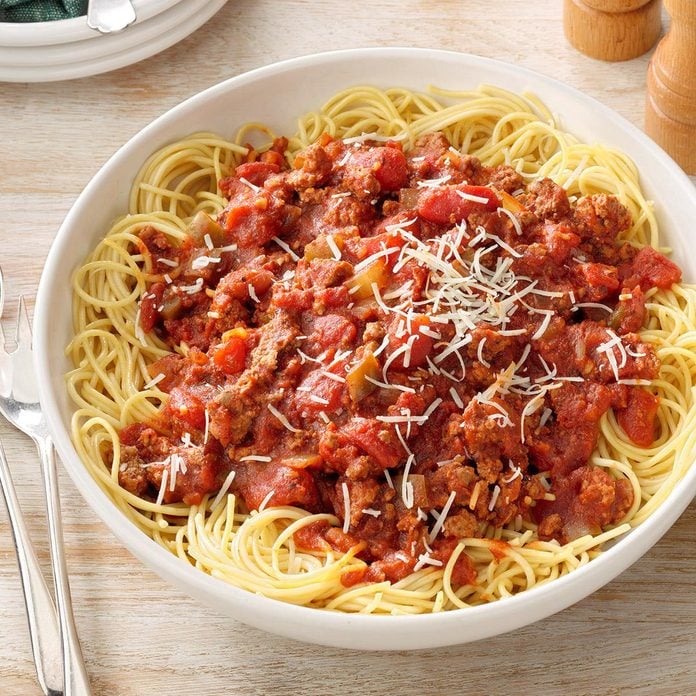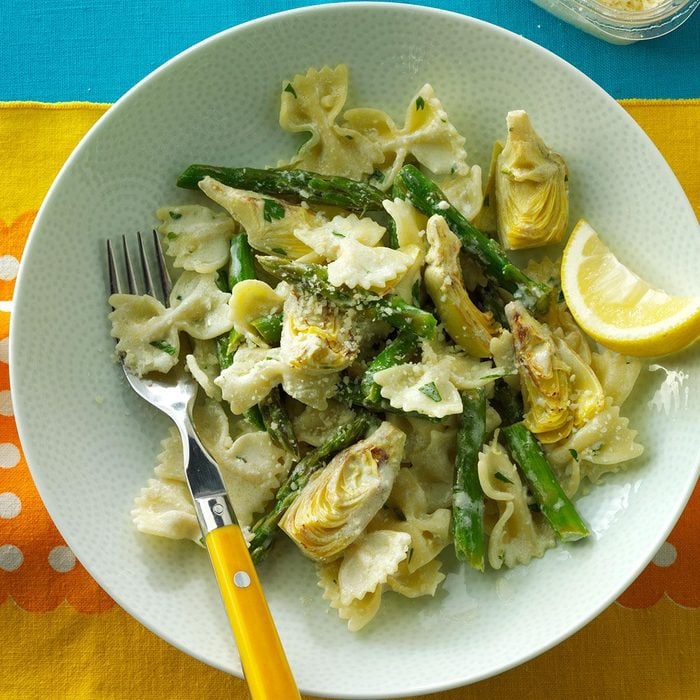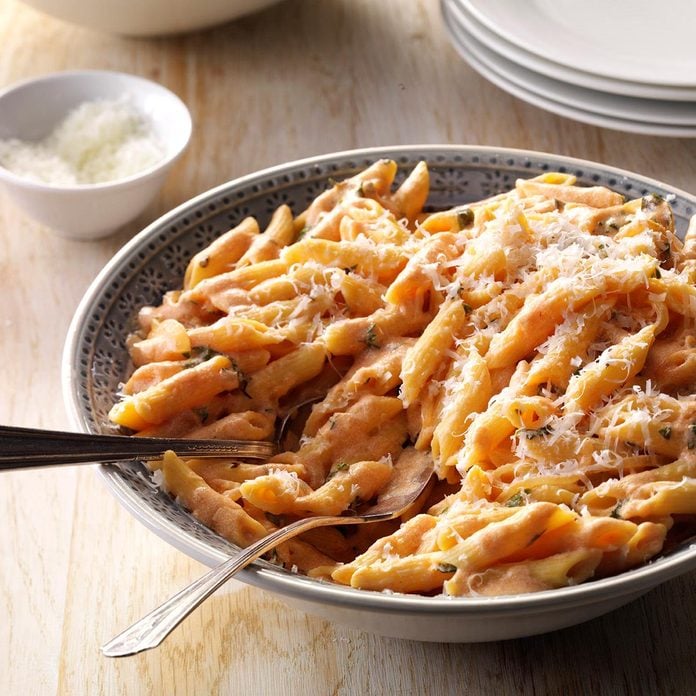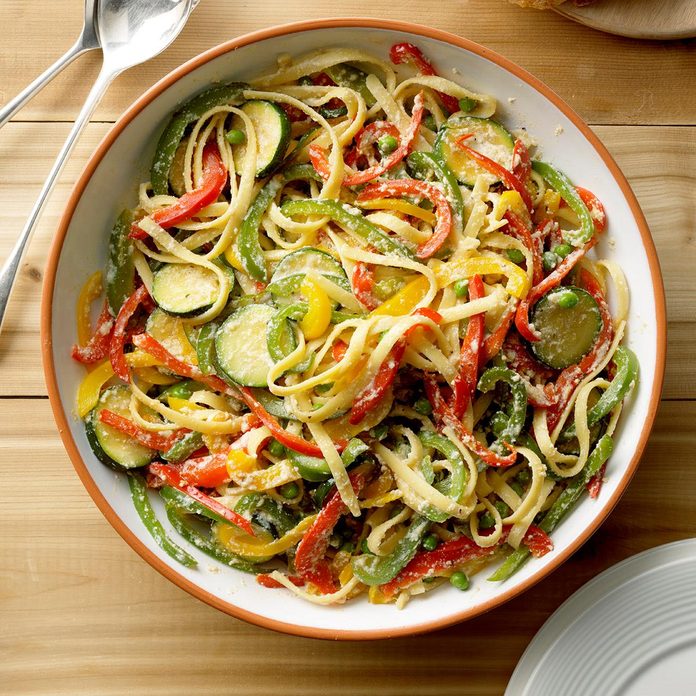Fresh Pasta vs. Dry Pasta: What’s the Difference?
Updated: Jan. 23, 2023
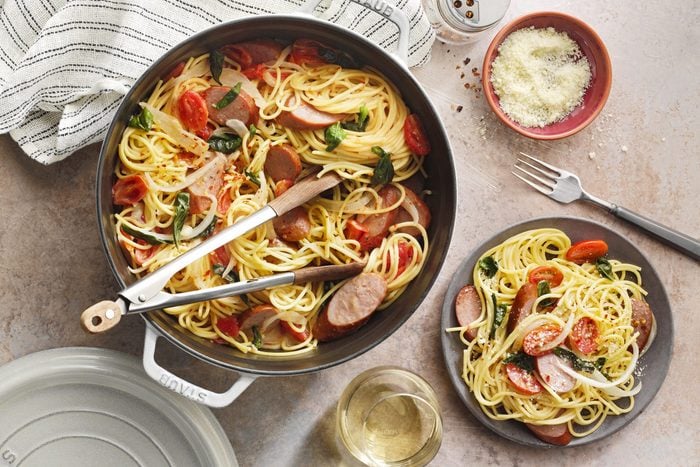
When should you use fresh pasta vs. dry pasta? The answer makes a big difference in the taste and texture of the final dish, but fresh isn't always better.
I grew up eating dried pasta, so it wasn’t until much later in life that I considered the debate of fresh pasta vs. dry pasta. Specialty grocery stores weren’t really a thing in the ’80s, and my mother certainly didn’t have time to make pasta from scratch. So we stocked up on dried spaghetti, fettuccine and any tube noodle that worked for making casseroles. It wasn’t until I went to culinary school that I fell in love with homemade pasta. Its rich flavor and luscious texture lured me in, and I spent hours practicing and kneading until I could make pasta with my eyes closed.
Today, you don’t even need to put in the work to enjoy fresh pasta: It’s available in the refrigerated section at most grocery stores. But, despite my love of fresh pasta, I’ve learned it’s not necessarily better than dry pasta. Both are worthy of a restaurant-quality meal—the one you choose depends on the pasta sauce you pair it with.
What’s the Difference Between Fresh and Dry Pasta?
Fresh or dry pasta can be used in any recipe, but they have different flavors and textures that will affect the final dish. Here are the major differences between the two to help you decide which to use.
Fresh Pasta vs. Dry Pasta: Ingredients
Dry pasta is made with water, semolina (a type of flour made from durum wheat) and sometimes egg. The ingredients are mixed together to create a crumbly dough. The dough is then pressed through an extruder fitted with a die to create the desired pasta shape, forming anything from long noodles to curly macaroni or tube-shaped ziti. Once formed, the pasta is dried for several days until the moisture evaporates, creating a shelf-stable product that’s good for several years.
Fresh pasta, on the other hand, is made with eggs and flour, usually a specialty type of flour called “00” flour. It also contains water or olive oil, and sometimes extra ingredients (like pureed spinach or spices like paprika) are added to give the dough a vibrant color. The dough is kneaded and passed through a cutting machine, or it can be hand-cut for rustic-style pasta. Because fresh pasta contains perishable ingredients, it must be cooked immediately or stored in the refrigerator.
When making fresh pasta, you’ll need to cook about 2 ounces per person. With dried pasta, it’s sometimes easier to use a cup measurer per person. Here’s our chart showing how much pasta per person you should make.
Fresh Pasta vs. Dry Pasta: Texture
Dry pasta is often cooked al dente, which means “to the tooth” in Italian. That gives dry pasta a tender-firm texture that’s perfectly chewy, and it holds up well to hearty sauces. Of course, if you continue to boil dry pasta past the al dente stage, it will eventually become soft and mushy, so you can choose the desired level of texture based on your preference.
Fresh pasta doesn’t give you any options when it comes to texture. In general, it’s smoother and softer than dried pasta, and it’s not possible to cook it to the al dente stage. Because the pasta isn’t dried through to the center, these noodles cook through in a matter of minutes, creating a uniform finish inside and out. The end result is a soft, springy texture.
Fresh Pasta vs. Dry Pasta: Cooking Time
Dry pasta cooking time depends on the size and shape. Most pasta takes 10 to 12 minutes, but thin pasta like angel hair may be done in as little as 8 minutes. Refer to the cooking instructions on the box and taste the pasta about 2 minutes before the timer expires. If it’s tender enough to chew but still contains a bit of a bite, you’ve reached al dente. If it’s too firm for your liking, continue cooking it until it reaches the preferred level of doneness.
Fresh pasta cooks much, much more quickly! Depending on the pasta’s thickness, it may be done in less than 2 minutes. Watch for the noodles to begin floating to the top of the pot. To check for doneness, bite into a noodle and look for a tiny white dot in the center. If you see it, continue cooking until it disappears, testing another noodle every 20 seconds.
Wondering how to keep those noodles from sticking? Check out our tips for how to make spaghetti noodles not stick, including dusting fresh noodles with flour (speaking of, did you know flour expires?) before dropping them in the boiling water.
Fresh Pasta vs. Dry Pasta: Storage and Shelf Life
When stored in a cool, dark place like a cupboard or pantry, dry pasta doesn’t ever really expire. The drying process removes all the moisture from the pasta, preventing it from attracting bacteria that lead to mold. That said, it tastes its freshest when used within two years of purchase.
How long does fresh pasta last? Typically, fresh pasta doesn’t have a very long shelf life. Store-bought fresh pasta is usually good for two to three days, but homemade pasta only lasts for one day in the refrigerator. If you need more time, transfer the fresh pasta to the freezer, drying it in a single layer on a baking sheet for 15 minutes before transferring the pasta to freezer-safe bags. In the freezer, it will stay good for about eight months.
Fresh Pasta vs. Dry Pasta: Where to Buy
Dried pasta is available at any grocery store. We recommend looking at the ingredients on the back of the box and avoiding any pasta that includes preservatives or stabilizers. If the packaging mentions bronze dies, the pasta was made the traditional Italian way, and the edges will be rougher to help the sauce cling to the noodles.
Fresh pasta used to be a specialty item only available at select stores, but today you can find it in the refrigerated section of most grocery stores. It’s also sold online from retailers. Avoid packaging with moisture inside, which can lead to mushy or moldy pasta. You’ll want to check the best-by date, too, before hitting the checkout.
When to Use Dry Pasta
It’s best to use dry pasta with rich, hearty sauces, like a pasta puttanesca dish or a thick, meaty ragu. That’s because dry pasta can be cooked al dente, giving the pasta a chewy bite and thick texture that holds up to these hearty sauces. Dry pasta is also ideal for casseroles and soups because it can hold up to the extended cooking time.
That said, it’s absolutely fine to use fresh pasta with rich sauces. Thick-cut homemade egg noodles are a perfect pairing for a classic bolognese, and fresh linguine will hold up fine to a seafood puttanesca. On the flip side, if your recipe calls for fresh pasta, feel free to use dry pasta if you don’t have the fresh variety on hand. For these recipes, we recommend cooking the dry pasta for the amount of time listed on the box. When they’ve reached the al dente stage, add them to the pan with the sauce and simmer the noodles in the sauce for a minute or two to help them reach a similar texture to fresh pasta.
When to Use Fresh Pasta
Fresh pasta shines with delicate sauces that accentuate its eggy flavor and chewy texture. Think carbonara, cacio e pepe or pasta tossed with simple sauces like butter, marinara or pesto. Using fresh pasta with a store-bought Alfredo sauce is an excellent way to elevate the canned sauce to something that tastes like it simmered away all day.
We don’t recommend using fresh pasta in baked recipes or anything that makes leftovers. Meal prepping for the week works well with dry pasta, but fresh pasta will fall apart in the refrigerator, turning into a gummy mess when it’s reheated. It’s best to use it for tonight’s meal and plan to have something else for lunch tomorrow.


